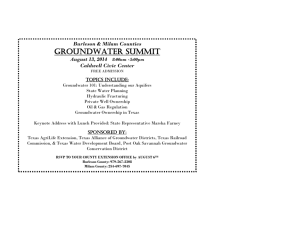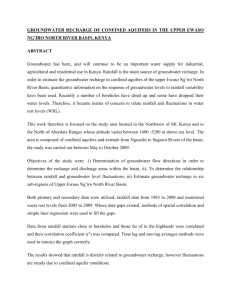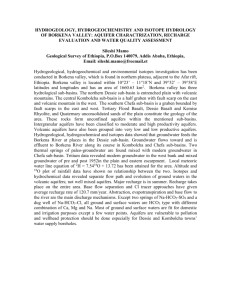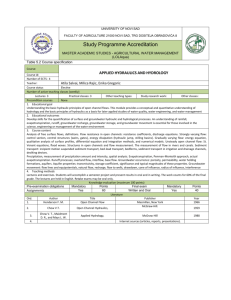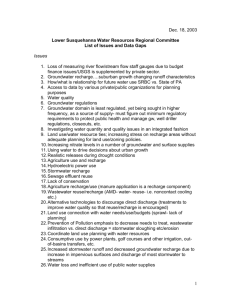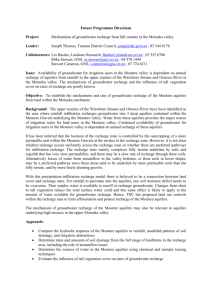Click here - GeoMontreal 2013
advertisement
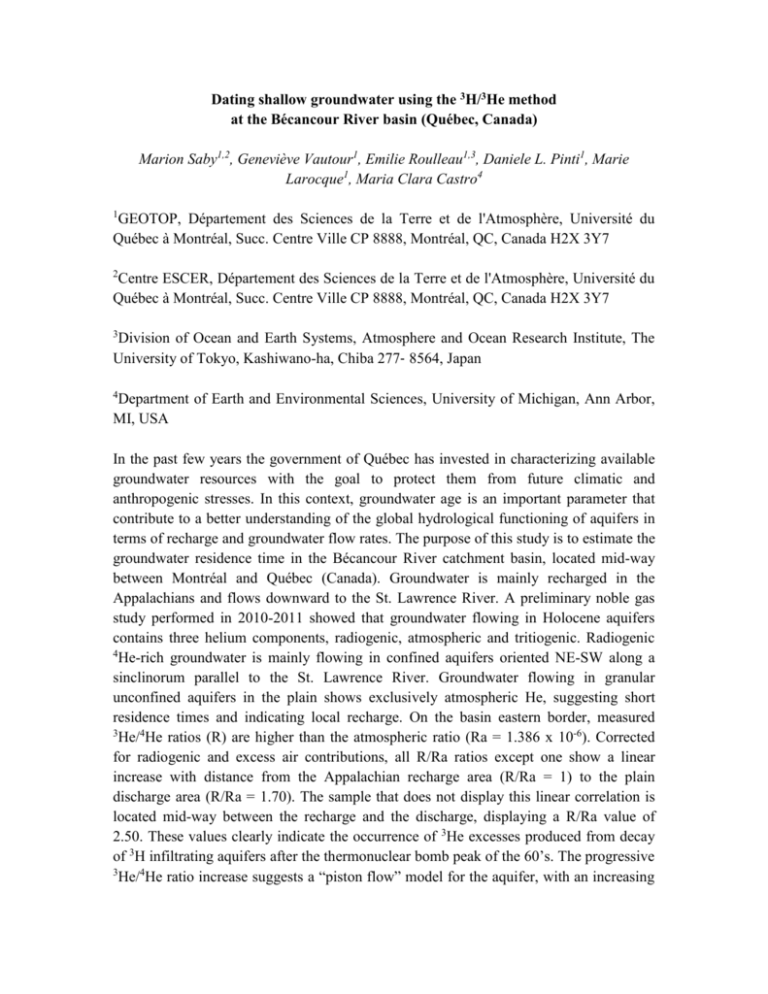
Dating shallow groundwater using the 3H/3He method at the Bécancour River basin (Québec, Canada) Marion Saby1,2, Geneviève Vautour1, Emilie Roulleau1,3, Daniele L. Pinti1, Marie Larocque1, Maria Clara Castro4 1 GEOTOP, Département des Sciences de la Terre et de l'Atmosphère, Université du Québec à Montréal, Succ. Centre Ville CP 8888, Montréal, QC, Canada H2X 3Y7 2 Centre ESCER, Département des Sciences de la Terre et de l'Atmosphère, Université du Québec à Montréal, Succ. Centre Ville CP 8888, Montréal, QC, Canada H2X 3Y7 3 Division of Ocean and Earth Systems, Atmosphere and Ocean Research Institute, The University of Tokyo, Kashiwano-ha, Chiba 277‐ 8564, Japan 4 Department of Earth and Environmental Sciences, University of Michigan, Ann Arbor, MI, USA In the past few years the government of Québec has invested in characterizing available groundwater resources with the goal to protect them from future climatic and anthropogenic stresses. In this context, groundwater age is an important parameter that contribute to a better understanding of the global hydrological functioning of aquifers in terms of recharge and groundwater flow rates. The purpose of this study is to estimate the groundwater residence time in the Bécancour River catchment basin, located mid-way between Montréal and Québec (Canada). Groundwater is mainly recharged in the Appalachians and flows downward to the St. Lawrence River. A preliminary noble gas study performed in 2010-2011 showed that groundwater flowing in Holocene aquifers contains three helium components, radiogenic, atmospheric and tritiogenic. Radiogenic 4 He-rich groundwater is mainly flowing in confined aquifers oriented NE-SW along a sinclinorum parallel to the St. Lawrence River. Groundwater flowing in granular unconfined aquifers in the plain shows exclusively atmospheric He, suggesting short residence times and indicating local recharge. On the basin eastern border, measured 3 He/4He ratios (R) are higher than the atmospheric ratio (Ra = 1.386 x 10-6). Corrected for radiogenic and excess air contributions, all R/Ra ratios except one show a linear increase with distance from the Appalachian recharge area (R/Ra = 1) to the plain discharge area (R/Ra = 1.70). The sample that does not display this linear correlation is located mid-way between the recharge and the discharge, displaying a R/Ra value of 2.50. These values clearly indicate the occurrence of 3He excesses produced from decay of 3H infiltrating aquifers after the thermonuclear bomb peak of the 60’s. The progressive 3 He/4He ratio increase suggests a “piston flow” model for the aquifer, with an increasing input of 3H-decay 3He downstream, thus water recharged in older times when the 3H input was more important than today. Water has been resampled in the fall 2012 and tritium analyses are under way at the University of Waterloo to obtain precise 3H/3He ages.



